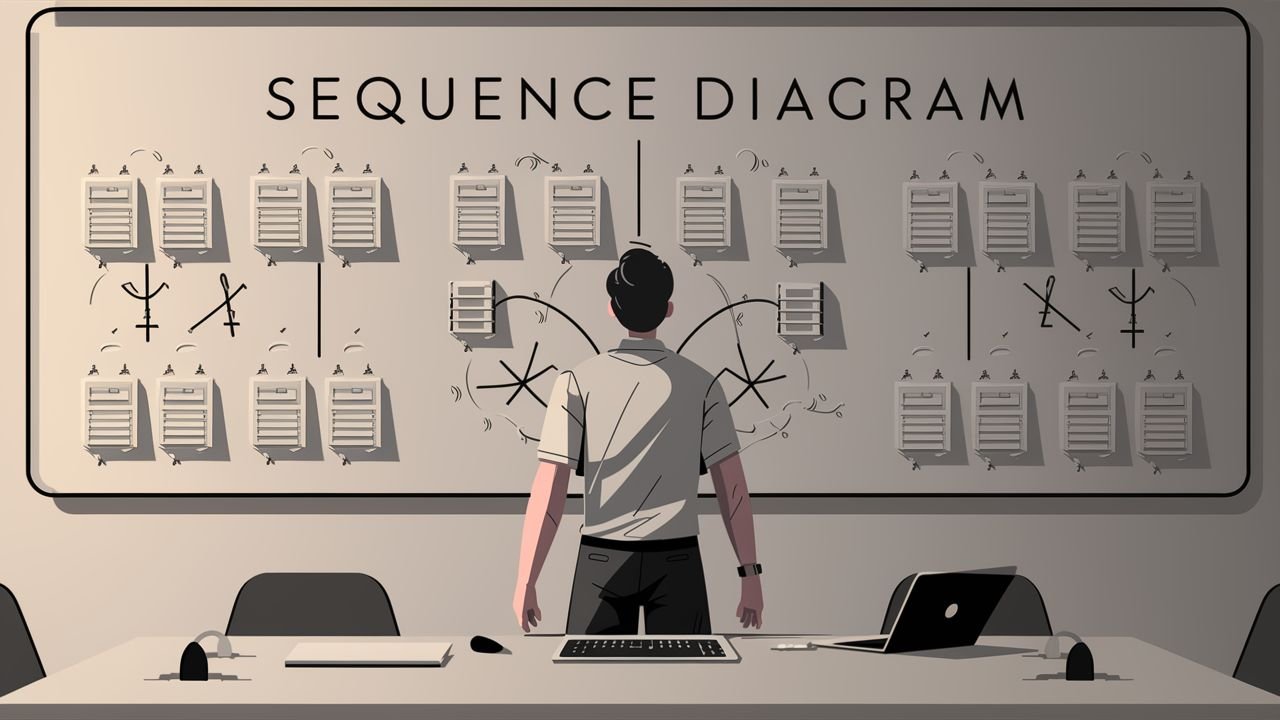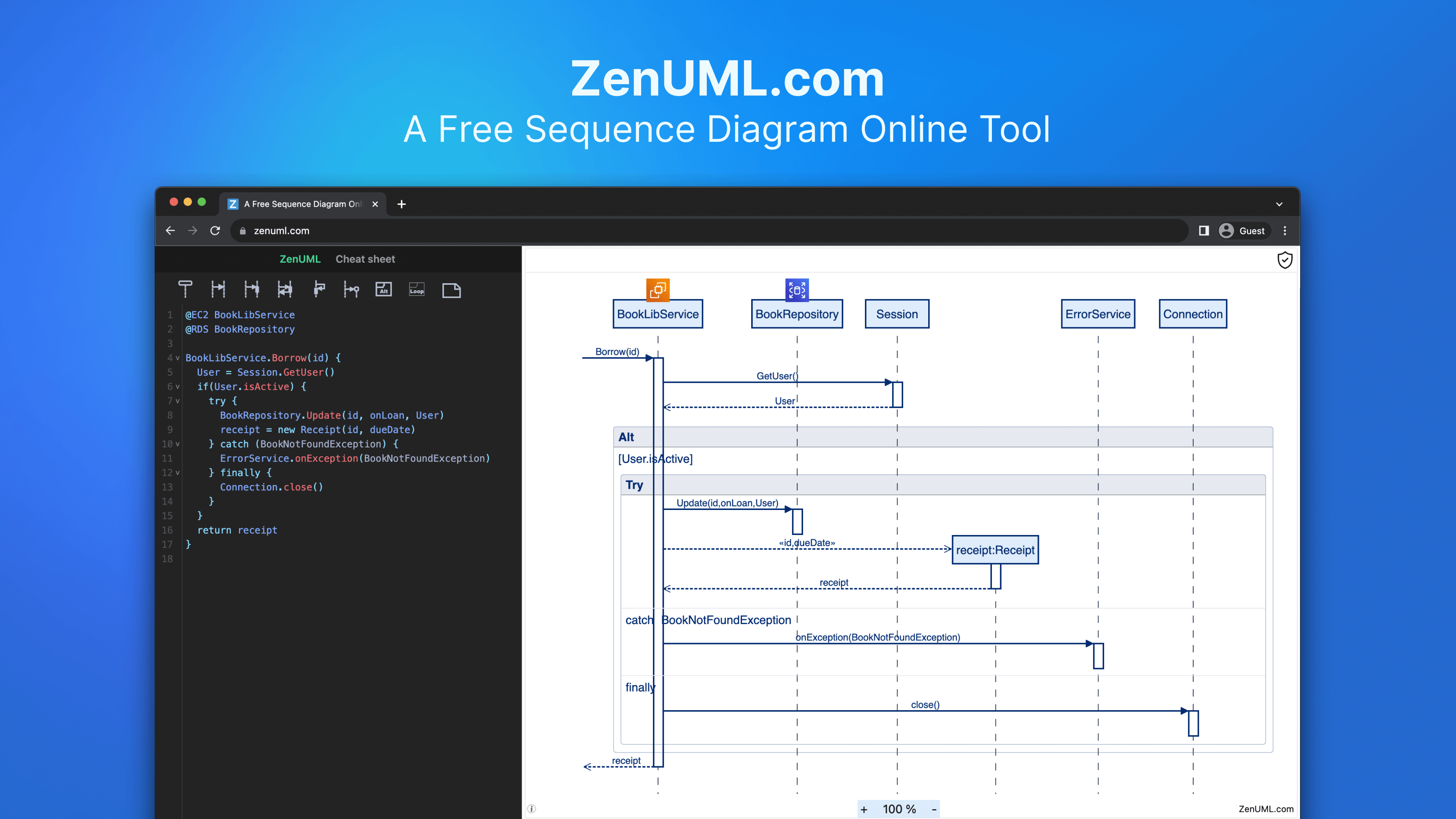
In the realm of system design, various tools and techniques contribute significantly to the successful development and implementation of intricate systems. Among these tools, sequence diagrams hold a prominent position. Sequence diagrams are visual representations that illustrate the interactions among different components or objects within a system. They offer a clear depiction of the message or action flow between these components, enabling designers and developers to comprehend the behavior and functionality of the system.
Unraveling Sequence Diagrams
Before diving into the significance of sequence diagrams, it is essential to first understand their structure and operation. A sequence diagram is an interaction diagram that portrays the sequence of messages exchanged between objects or components in a system. It demonstrates the order in which these messages are sent and received, along with the lifelines of the involved objects.
Sequence diagrams comprise several key elements:
-
Objects: These are the components or entities within the system that interact with each other. Each object is represented by a vertical line called a lifeline.
-
Messages: Messages symbolize the communication or interaction between objects. They are depicted as arrows that flow between the lifelines of the objects.
-
Activation Boxes: Activation boxes represent the period during which an object is actively processing a message. They are shown as vertical rectangles on the lifeline.
-
Return Messages: Return messages indicate the response or result of a previously sent message. They are represented by dashed arrows.
Utilizing these elements, sequence diagrams provide a clear and concise representation of the dynamic behavior of a system, allowing designers and developers to analyze and optimize the system's functionality.
The Significance of Sequence Diagrams
Sequence diagrams play a pivotal role in system design for numerous reasons:
1. Visualizing System Behavior
One of the primary advantages of sequence diagrams is their capability to visualize the behavior of a system. By representing the flow of messages and interactions between objects, sequence diagrams provide a clear and intuitive way to understand how the system operates. This visual representation helps designers and developers identify potential issues, bottlenecks, or inefficiencies in the system's design.
According to a study conducted by the Software Engineering Institute, visual models, such as sequence diagrams, can significantly improve system understanding, reduce errors, and enhance productivity.
2. Facilitating Communication and Collaboration
Sequence diagrams serve as a universal language for communication and collaboration among stakeholders involved in system design. They provide a visual representation that can be easily understood by both technical and non-technical team members. This facilitates effective communication and ensures that all stakeholders have a shared understanding of the system's behavior and functionality.
A survey conducted by IEEE Software revealed that 84% of respondents believe that visual modeling tools, such as sequence diagrams, improve communication and collaboration among team members.
3. Identifying Design Flaws and Improvements
By analyzing sequence diagrams, designers and developers can identify design flaws or areas for improvement in the system. The visual representation allows them to trace the flow of messages and identify any inconsistencies, redundancies, or unnecessary complexity in the system's design. This enables them to make informed decisions and optimize the system's performance and efficiency.
According to a report by the Consortium for IT Software Quality, identifying and addressing design flaws early in the development process can reduce development costs by up to 75%.
4. Testing and Debugging
Sequence diagrams are invaluable tools for testing and debugging system implementations. They provide a blueprint for developers to follow during the testing process, ensuring that all expected interactions and behaviors are properly implemented. By comparing the actual system behavior with the sequence diagram, developers can easily identify and fix any discrepancies or errors in the system.
A study published in the Journal of Systems and Software found that using sequence diagrams for testing and debugging can increase fault detection rates by up to 30%.
5. Documentation and Maintenance
Sequence diagrams also serve as critical documentation for system maintenance and future enhancements. They provide a comprehensive overview of the system's behavior and interactions, making it easier for new developers to understand and work on the system. Additionally, sequence diagrams can be updated and modified as the system evolves, ensuring that the documentation remains up-to-date.
According to a survey conducted by the Institute of Electrical and Electronics Engineers (IEEE), high-quality documentation, such as sequence diagrams, can reduce maintenance costs by up to 50%.
Frequently Asked Questions (FAQ)
-
What other types of diagrams are commonly used in system design?
- Apart from sequence diagrams, other types of diagrams used in system design include class diagrams, use case diagrams, and activity diagrams. Each of these diagrams serves a specific purpose and provides valuable insights into different aspects of the system.
-
Can sequence diagrams be used for both simple and complex systems?
- Yes, sequence diagrams can be used for both simple and complex systems. They are particularly useful for understanding the interactions and behaviors of complex systems with multiple components or objects.
-
Are there any tools available for creating sequence diagrams?
- Yes, various tools are available for creating sequence diagrams, such as UML modeling tools like Lucidchart, Visual Paradigm, and Enterprise Architect. These tools provide a user-friendly interface for designing and documenting sequence diagrams.
-
How often should sequence diagrams be updated?
- Sequence diagrams should be updated whenever there are significant changes to the system's design or functionality. It is important to keep the diagrams in sync with the actual implementation to ensure accurate documentation.
-
Can sequence diagrams be used in agile development methodologies?
- Yes, sequence diagrams can be used in agile development methodologies. They can be created and updated iteratively as the system evolves, providing valuable insights into the functionality and behavior of the system throughout the development process.
Conclusion
Sequence diagrams are a potent tool in system design, offering a visual representation of the interactions and behaviors within a system. They help designers and developers understand the flow of messages between components, identify design flaws, facilitate communication and collaboration, aid in testing and debugging, and serve as documentation for system maintenance. By leveraging sequence diagrams, system designers can optimize the functionality and efficiency of their systems, leading to successful implementations and satisfied stakeholders.
Remember, in the world of system design, sequence diagrams are an indispensable asset that can significantly enhance the development process. So, make sure to incorporate them into your system design toolkit and reap the benefits they offer.
Now that you understand the significance of sequence diagrams in system design, it's time to put this knowledge into practice. Start incorporating sequence diagrams into your design process and witness the positive impact they have on your system's functionality and efficiency.
Happy designing!
Find more examples of how architects use sequence diagrams here
Try ZenUML now!
Zenuml detailed feature roadmap available here.

